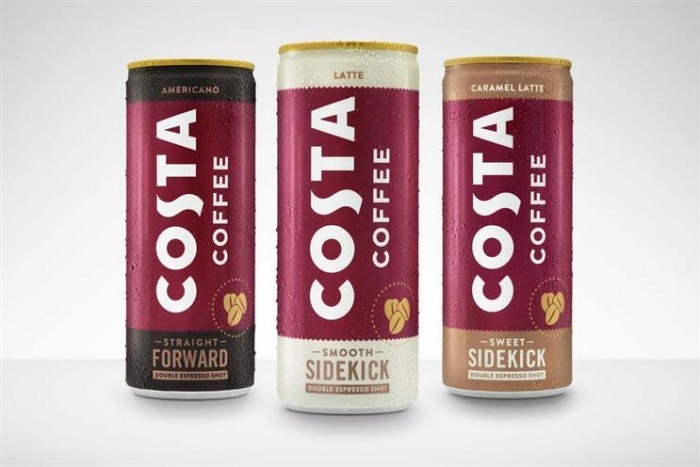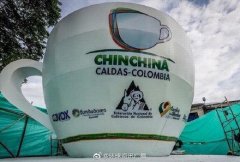Why do beverage industry giants launch carbonated coffee one after another? Is the carbonated coffee good?

Professional coffee knowledge exchange More coffee bean information Please pay attention to coffee workshop (Weixin Official Accounts cafe_style)
In recent years, carbonated beverage giants have become increasingly focused on the coffee market, with Coca-Cola acquiring British coffee chain Costa for $5.1 billion in 2018. As the coffee market grows, more beverage companies have entered the market. In early May this year, Nongfu Spring, China's largest drinking water brand, announced that it would launch a carbonated coffee soon.
Carbonated drinks have entered the Chinese market since the early 20th century. In such a long time, the product formula has hardly changed much, and only the packaging and marketing of the product have changed.
However, consumers are hard to tune, some revere recipes, some look forward to innovation. With the continuous improvement of extraction technology and the increasing popularity of ready-to-drink coffee, dissolving coffee into carbonated drinks has become an attempt by beverage giants.
In fact, carbonated beverage giants had already completed this attempt thirteen years ago, but due to the small consumer group at that time, unclear positioning and other reasons, they finally failed.
In 2006, Coca-Cola launched a coffee-flavored Coke Coca-ColaBlak in Europe and North America, but consumers did not accept the new flavor of Coke very well. Coca-ColaBlak announced its discontinuation only two years after it was launched.
Chinese drinks giant Wahaha also launched a very coffee cola in June 2006. At the beginning of the market, due to the excellent promotion of Very Coffee Cola, the average monthly shipment volume exceeded 5 million cases in the first two months of the market. In some convenience stores in Shanghai and Hangzhou, very coffee and cola were even out of stock for a time.
However, two years later, the development of very coffee cola has seen fatigue. Ten years ago, the number of Chinese consumers who used coffee as a daily consumable was small, and the development of ready-to-drink coffee was relatively slow at that time, so the final score of this very coffee cola was mediocre.
In addition, Japanese company Suntory has also tried. In July 2012, Centennial beverage giant Suntory launched Espressoda, a coffee soda aimed at professionals aged 20 to 39.
Suntory was very careful in developing this coffee soda. In terms of raw materials, Espressoda coffee soda uses coffee beans from famous places such as Brazil and Colombia. Technically, Suntory spent 5.8 billion yen developing new carbonation technologies. Marketing, Espressoda once listed, advertising all over Japan's subway, train.
However, in 2012, the Japanese functional beverage market has already been occupied by several giants such as Red Bull, Coca-Cola Burn, Asahi Beverage Monster, etc. Although Suntory's Espressoda is full of attention in the early stage, it has not achieved outstanding results in sales volume.
As consumers pay more attention to healthy eating, carbonated drinks are becoming less popular because of high sugar, and their development is getting slower and slower, so major beverage giants have launched coffee sodas. Although coffee soda sounds novel and new, it is essentially a high-sugar carbonated drink. Therefore, innovation in taste has not directly stimulated the recovery of the carbonated beverage market.
In order to meet consumers 'demand for low-sugar foods, Coca-Cola took the lead in launching Coca-Cola Plus Coffee (also known as Coca-Cola Coffee Plus) in 2017.
Coca-Cola Plus Coffee, first marketed in Australia, has 50 percent fewer calories and 50 percent more caffeine than regular Coke. Compared to coffee cola that has appeared on the market, this coffee cola has a stronger soda feel and a stronger sensory stimulation brought by bubbles. In 2018, Coca-ColaPlusCoffee gradually appeared in Vietnam, Thailand, Cambodia, Japan and other Asian countries. However, in order to be closer to the taste of local consumers, sugar has been re-added to Coca-Cola Plus Coffee marketed in Japan.
In April 2019, Coca-Cola CEO James Quincy announced that an upgraded version of Coke Coffee would be launched in at least 25 markets around the world by the end of this year. It's not unreasonable for Quincy to value this Coke coffee so much.
On Feb.14, Coca-Cola released its 2018 earnings report, with revenue down 10% year-on-year in 2018 and its share price plunging 8.4% that day, its biggest drop since October 2008.
(Source: Wind)
Coca-Cola is in a critical period of transformation, and the rise of the global coffee market has given Coca-Cola direction for transformation. In the hot coffee market, Coca-Cola has already occupied a position by acquiring Costa at a high price; in the ready-to-drink coffee market, Cola Coffee is bound to set off a wave when it goes on sale at the end of the year.
In addition to Coca-Cola's transformation into carbonated cola, KFC also launched sparkling ice coffee, Ruixing also launched a carbonated coffee-black gold bubble American, Nongfu Spring also launched carbonated coffee.
Why do beverage giants at home and abroad join the carbonated coffee drink track?
According to public data from the National Bureau of Statistics, China's carbonated beverage output in 2018 was 17.446 million tons, accounting for 9.41% of the entire beverage market. With the change of consumption concept and the upgrading of production technology, the wave of traditional carbonated drinks has passed away, and the new bubble drinks that meet the needs of consumers will divide the existing market share of traditional carbonated drinks.
According to data from the International Coffee Organization, the total global coffee production from 2017 to 2018 was 10.08 million tons, and the total consumption was 9.9 million tons. The global coffee market grew steadily. In 2018, the consumption of green coffee beans in China reached 229,500 tons, with a compound growth rate of 21.74% in 7 years, far exceeding the general level of 2.53% in the world. The average annual coffee consumption cup of Chinese people was 6.2 cups, doubling in five years.
Domestic coffee demand growth is strong, coffee industry is good is one of the reasons why major domestic beverage giants are eyeing.
However, it is not difficult to find in the historical process from coffee cola to carbonated coffee that only products closer to the needs of the masses can win the hearts of consumers.
At present, consumers avoid high-sugar drinks, in this case, low-sugar drinks have emerged, carbonated coffee or really can lead the trend of the times.
END
Important Notice :
前街咖啡 FrontStreet Coffee has moved to new addredd:
FrontStreet Coffee Address: 315,Donghua East Road,GuangZhou
Tel:020 38364473
- Prev

Colombia makes the world's largest coffee cup & most people share the world's largest coffee cup
Professional coffee knowledge exchange more coffee bean information please follow the coffee workshop (Wechat official account cafe_style) [Colombian giant coffee cups to break two Guinness World Records] Chinchina in south-central Colombia recently built a giant coffee cup and plans to hold a coffee culture festival in the city from the 15th to 16th of this month.
- Next

Why does this cup of coffee cost $75? What coffee is the most expensive?
Professional coffee knowledge exchange more coffee bean information please pay attention to the coffee workshop (Wechat official account cafe_style) in the past few years, gourmet, specialty coffee is popular all over the world. But what makes this particular coffee product so valuable-enough to get a value of $75 per cup? When Panama's award-winning coffee began bidding within a few weeks, all eyes were focused on the price.
Related
- A complete list of coffee bean names and their meanings! What is Yejia Shefi coffee? Where is Mantelin coffee?
- What grade does Arida Manor Kaduai coffee beans belong to? What treatment is Arida ASD slow anaerobic sun exposure?
- The milk tea cup becomes smaller?! Overlord Tea Girl launches a new "Return to Yunnan" series
- Accused of selling counterfeit and high-priced coffee beans! Well-known boutique coffee brand "Oukelao" bowed and apologized!
- How to make espresso dumplings? Can I eat coffee and glutinous rice balls together?
- Save the unformed and stagnant powder cakes in one second! What is the problem with stagnant water in the powder bowl of the espresso machine?
- What does hand-brewed coffee stop mean? Why is it not recommended to make coffee by hand?
- Is it normal to smell like coffee? Why does coffee smell like alcohol? What's wrong with the strong smell of cold extract ice dripping ice brewed coffee?
- How to solve the problem that hand-brewed coffee extraction takes too long? Why is the water flowing so slowly when making coffee?
- The main points of making Australian white coffee, the proportion details, how does Australian white properly foam and blend the flowers?

